22 February 2017
The city of Florence has been the cradle of two great revolutions in art, the Renaissance and the Radical movement. The latter was the perfect antithesis of the former, and it is certainly no coincidence that both sprang from the same place. Renaissance society aspired to attain the utopia of the ideal city through principles of formal rigor. The idea was that of a city organized on the basis of scientific methods: urban design was supposed to respect the rules of geometry, symmetry and proportion and everything was to be organized according to the light of reason. Florence was the heart of the first true experiment with rationalism in the history of humanity. The squares, alleys and buildings of Florence constructed in that historical period are all rooted in geometric rigor. Still today, any intervention—even in only temporary—that is seen as “foreign” to this logic comes under fierce attack from the inhabitants, who feel it is their historical duty to defend the aesthetic harmony of their ideal city. “Furious battles” were fought over Jeff Koons’s sculpture in Piazza Signoria, the artist Ai Weiwei’s installation of red rubber dinghies on the façade of Palazzo Strozzi and the positioning of Gaetano Pesce’s work next to the church of Santa Maria Novella, to cite just a few examples from the last year.
Studying architecture in Florence in the middle of the 1960s meant being steeped in a steadily rising climate of student protest, but it also meant being able to attend the lectures of professors like Gillo Dorfles, Ludovico Quaroni and Umberto Eco, who were later to prove real revolutionaries for the theory of design. A singular explosive mixture was created in this place: on the one hand a monolithic, fossilized, ideal city, and on the other the strong drive of young students intellectually ready to propose a new idea of the future, no longer viewed as linear, orderly, enlightened development. People had started to imagine a modernity that would be less tidy, but not as a result lacking in beauty. On the contrary, this disorderliness would enrich us all. New expressive languages emerged in opposition to order and formal rigor. The kitsch challenged a bourgeois drabness made up of cold, clinical, minimalist objects. A whole series of figures and groups worked with these premises: Archizoom Associati, Superstudio, Gruppo UFO, Ugo La Pietra, Gianni Pettena, Remo Buti and others. Florence, historical capital of the Renaissance became, by contrast, capital of the rejection of Renaissance principles. It was Germano Celant who came up with the term Radical to describe this artistic avant-garde.
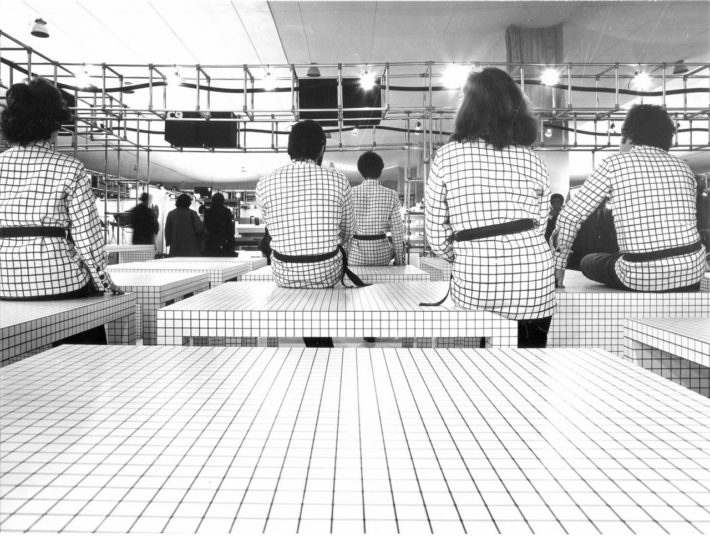
Furniture of the Misura series, produced by Zanotta for the Quaderna collection, 1970-71.
The protagonists of the Radical groups were all architects, and the visions they proposed had from the start a visionary stamp of an urbanistic-architectural type. Italian architectural culture has always been very reluctant to take the aspirations of these groups on board, often seeking refuge in academic language. It is no accident that many of the Radicals’ ideas would be taken up by foreign architects like Rem Koolhaas, Frank Gehry, Hans Hollein, Toyo Ito and others. The only figures to which Italy would assign a leading role were academics like Franco Purini, Paolo Portoghesi and Aldo Rossi, who at the most drew on the ideas of the Radicals for their aesthetic value rather than for their content. In this context, the young Radicals found more room for maneuver in design, a sphere in which no structured school as yet existed (the first university departments of industrial design in Italy would not be set up until later). In the mid-sixties a number of small enterprises were interested in creating new products in order to gain a foothold in markets not yet explored by the traditional big companies. Poltronova, Cassina, Gufram, B&B Italia and others gave room to young graduates, allowing them to experiment with a somewhat alternative approach. A gamble that paid off handsomely. For these young designers the bastion of rationalist orthodoxy was the School of Ulm, founded in Germany after the war (1953). What they were questioning were the principles of the Bauhaus, and the idea of “definitive objects” able to solve the problems of functionality and aesthetics once and for all. Instead they felt it was objects that should be differentiated to meet the needs of human beings, not the other way round. An example of this was the Superonda project (Archizoom Associati, 1967), a product that could be converted with extreme ease into a couch, a chaise longue or a bed, favoring untidy, unbecoming and relaxed positions of the body. This approach to industrial design was a wholly Italian characteristic. In contrast to the Protestant severity of Northern Europe, Italy has always promoted a Catholic vision of a softer and more conciliatory nature, allowing itself to indulge in ostentation and excess. Even the Italian designers closest to the rationalist experience like Enzo Mari, Angelo Mangiarotti, Vico Magistretti and Bruno Munari were inclined to make use of forms that, while rigorous, tended toward a marked expressiveness. The Radicals stoked that expressivity and helped to bring about the international success of Italian design. Even today, much of the work done in the field is the direct consequence of this incredible wave of innovation.
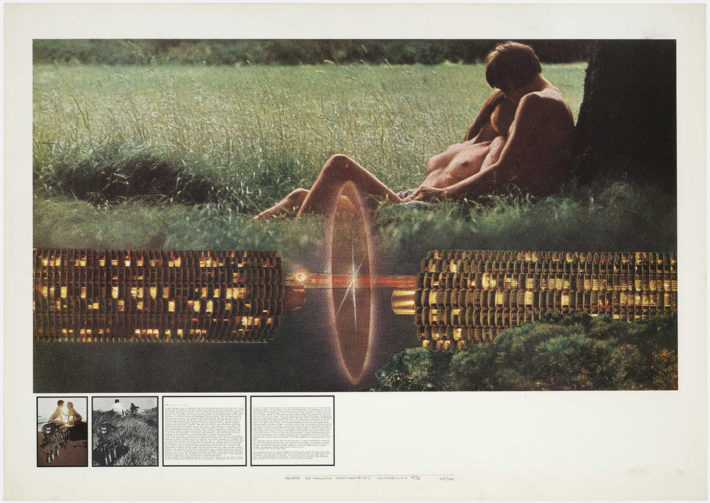
Superstudio, Fundamental Acts. Love. The Falling-in-Love Machine, 1972. Lithograph.
The immediate heirs of Radical experimentation would be the groups Alchimia (1976) and then Memphis (1981-87). The two famous collectives would approach their work from the perspective of a market no longer seen as one-dimensional, but as a range of many different individualities. The task of design was to communicate those differences and shun homogenization. The expressive possibilities of objects were taken to extremes, even going so far as to negate their functional aspects. A couch might be uncomfortable, but it could not risk anonymity. The functionalist ideal of “form follows function” was transformed into “form follows expression.” Products were brightly colored and aggressive. The forms were provocative, eccentric and postmodern. In the experience of Memphis above all, the charismatic figure of Ettore Sottsass and his idea of intimist design were highly influential. He would be the first to realize the innovative potentialities of the Radical movement. What interested him was to investigate the anthropological relationship that the user had with objects:
“Certainly to me design is not restricted to the necessity of giving form to a more or less stupid product for a more or less sophisticated industry. So, if you have to teach something about design, you have to teach, first of all, about life and you have to insist, explaining that technology is one of the metaphors of life.”1
The limitation of these experiences would be their alignment with a style, that of Mendini for Alchimia and that of Sottsass for Memphis. The diversity of languages proposed never matched the number of people who belonged to these groups, since their two spiritual guides swallowed up all the rest. Thanks to Mendini and Sottsass, however, the Radical lesson was able for the first time to codify an autonomous lexicon of real and credible opposition to minimalist design.

Superstudio, Bazaar, produced by Giovannetti, 1969. Photo: C. Toraldo di Francia.
In 1985 the King-Kong group was set up in Florence. Its members included Stefano Giovannoni and Guido Venturini, both pupils of Remo Buti (cofounder of the Radical architecture group Global Tools in the seventies). Almost all their products would be made by the Alessi company, which began in this way to experiment with a new kind of production with respect to the previous one. Their design was playful and colorful. Objects became fun to use and made no claim to last forever; on the contrary, they could be changed to keep in step with changing tastes. This approach to design aspired to turn the product into a “novelty,” resulting in the incessant—and somewhat logorrheic—churning out of new forms. The real difference from the early Radical experiments was the absence of any intellectual or philosophical implications. Ulm’s mission had been to educate mass society through the production of good forms. For the Radicals of the sixties and seventies the association with pop culture meant taking an ideological stand against the edifying object. In the eighties and nineties, instead, people designed provocative objects because the market responded positively to them. Design became uncommitted, losing the ideological implications that had characterized it in the previous two decades.
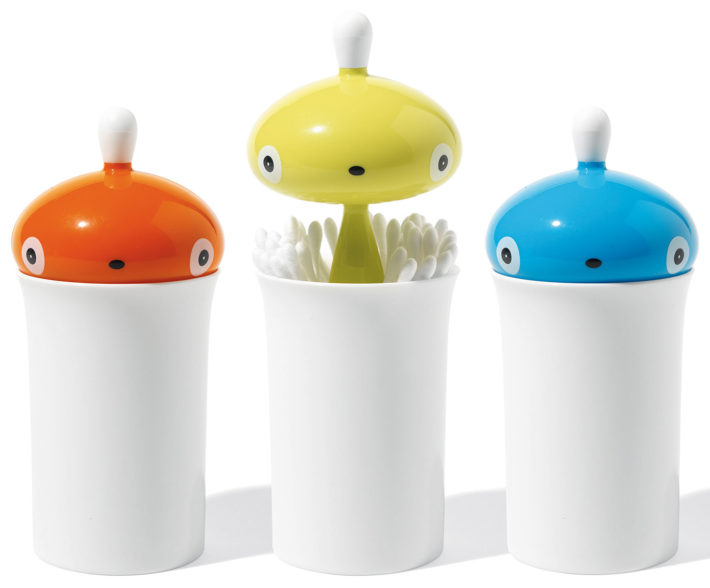
Pisellino, design by Stefano Giovannoni for Alessi, 2005. Cotton swab holder.
Bolidismo, a movement founded by sixteen architects (all former students of architecture at Florence University), was an attempt to unite the last two Italian avant-gardes, the Radical and Futurist movements. Research into the dynamism of forms combined with the pop language of American comic strips was well received by the media, but rapidly got tangled up with an aestheticism for its own sake, which would have no major consequences in the years to come. It was the stars of design in the nineties who drew unsparingly on the Radical experience: Philippe Starck, Karim Rashid and Ron Arad have always admitted the strong influence of Italian design on their work. It was Radical to take a lemon squeezer, strip it of any functional value and turn it into a purely iconic and sculptural object (Philippe Starck, Juicy Salif, 1990). The product acquired value as an icon and became nothing more than an icon in so far as it lost its function. The designer turned into a celebrity, with a lifestyle to match, and companies vied with one another for the new stars. These designers have asserted in various interviews that theirs is a “useless job”: with this expression, in addition to a clearly provocative intent, they were stressing their right to show an interest in the ephemeral, the superfluous. The term “designer object” began to imply something redundant, eccentric, excessive. Design seemed to be reflecting in magnificent fashion a new free-and-easy and proudly uninhibited climate.
Another direct descendant of this world is the designer Fabio Novembre, who is distinguished by his taste for the spectacular, the theatrical. The strength of his objects is their ability to tell stories. Often the designs are clear exercises in communication that set out to create a wow effect, earning themselves a place on magazine covers. Fabio Novembre also takes a celebrity approach to his profession, appearing in the media as an interviewer, commentator, writer and stager of exhibitions. Something extra with respect to his colleagues.
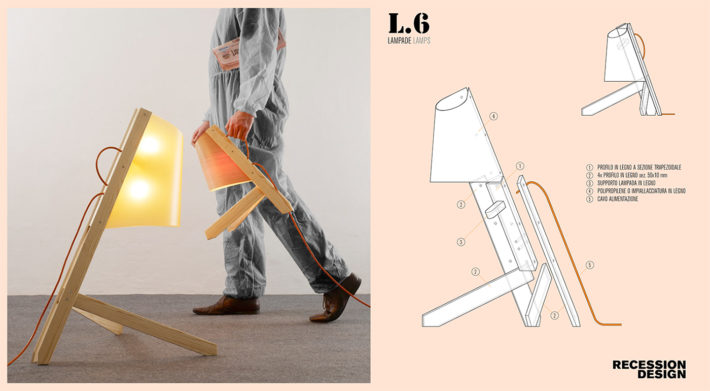
Lampada L6, design by Joran Zedrejcic, Recession Design, 2013.
With the new century the star system of the nineties slowly began to work itself out and designers, no longer having to overdo things, would try to establish a dialogue between functionalism and the need for expressivity. Ronan & Erwan Bouroullec founded the French studio of the same name in 1998. Their research aims to mediate between the technical and the natural, between technology and poetry. From the Radicals they have taken the idea of an emotionally stimulating form, but without the excesses that characterized the sixties and seventies. With regard to the period of his youth, Andrea Branzi (ex Archizoom), talks about2 an “exaggerated generation” and claims that this exaggeration was a necessary reaction to the bourgeois culture of the time, obliging designers to strain forms and contents to the point of absurdity: the Bouroullec brothers on the contrary felt the need to find an equilibrium and never take things too far, trying to maintain a balanced tone.
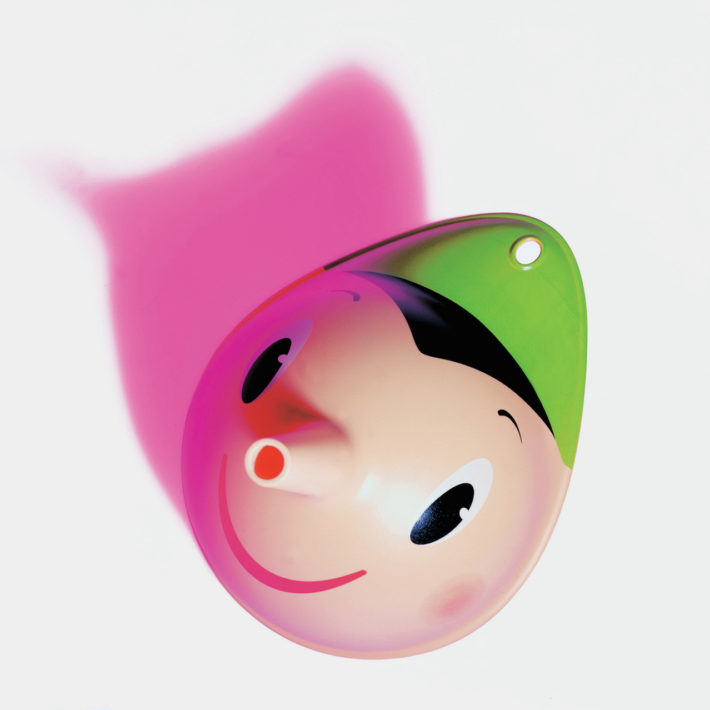
Pino, design by Miriam Mirri and Stefano Giovannoni for Alessi, 1998. Funnel. Photo: Carlo Lavatori.
Giovannoni’s heir apparent would be Miriam Mirri. From the experience of King-Kong she has derived a design in which the sign, in the sense of drawing, continues to play a very strong part. Like Giovannoni, she uses colors and invents anthropomorphic figures, but hers is not a design of rupture with the past, but a dialogue with the world of memories, always in search of a poetic and refined language. The relationship she establishes with objects is like the one we have as children, when a funnel can become the face of Pinocchio, or a lampshade the guardian angel of your bedroom. The force of her designs lies in metaphor. Never any provocation, just a light touch of irony. No difficult intellectualism, but allusions to things that all of us have, memories of our childhood, the world of play and imagination.
In the same period, from France, 5.5 Designers proposed an ironic, amusing kind of design. They were able to come up with a pen drive that played with the iconic form of the key (USB 5.5, 2009) and a temporary seat made of sand (Sand Furniture, 2004), or to design a modular system of fittings consisting of simple clamps that must be completed by the users (Half of Retail Fixtures, 2010). They have taken from the Radical movement its provocative, free-and-easy, antidogmatic spirit. Careful though, this is no bunch of young people producing “alternative designs”: they work for major multinationals (Nespresso, Veuve Clicquot, LaCie, McDonalds), proposing creative solutions with a high degree of “Radical” irony.
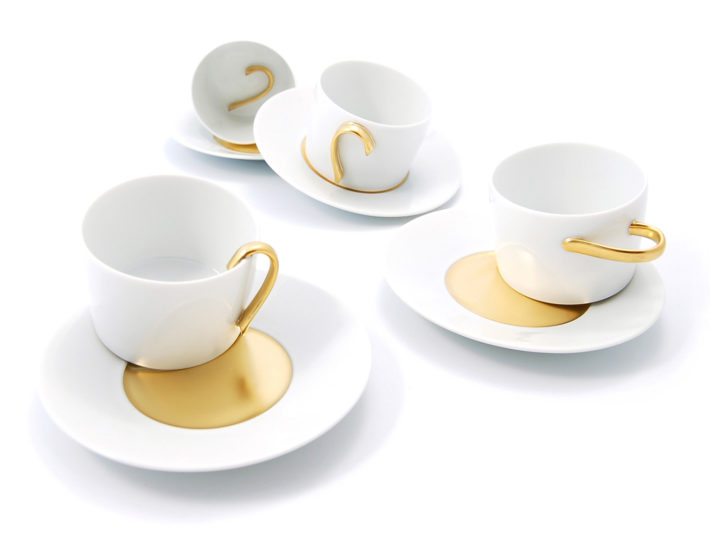
Ouvriers-designers, design by 5.5 designers for Bernardaud, 2005.
The Radical movement always hoped to bring social awareness into its approach to design. The idea was that of a popular design able to reach the whole of society. Since 2009, the experience of the group called Recession Design has been a response to this vision. Around forty designers decided to come up with objects or pieces of furniture like chairs, desks, bookcases and clothes hangers that could be made with materials easily obtained from DIY stores. Pieces that anybody would be able to construct with his or her own hands, leaving them the possibility to adapt or improve on them and share the results with others. All the designs, along with photos and technical descriptions, can be downloaded free of charge from their website and have also been published in the book Design fai da te 2.0 (Rizzoli, 2013). The possibility of eliminating the manufacturer as a go-between in a society now conscious of the practice of design had always been one of the visions of the Radical movement and perhaps it is no coincidence that among the designers involved in this project there is also Carmine Deganello, the son of Paolo Deganello (Archizoom).
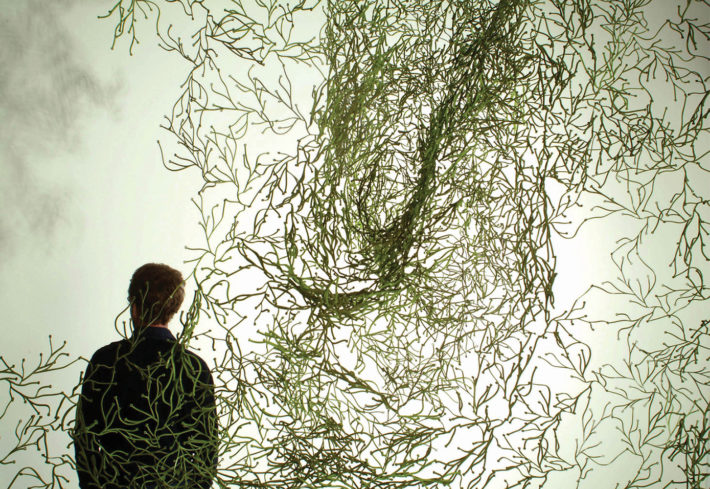
Algues, design by Ronan & Erwan Bouroullec, 2004.
The experience of the Radical movement was one of the most important there has even been in Italy. It anticipated the themes of postmodernity, putting forward the idea of a liquid society before Bauman. The question that the design of the future will have to tackle will not so much be that of whether or not to have a positive relationship with industry, as that of whether the industrial system will still be an obligatory frame of reference. Themes like self-production or the design of immaterial processes will be the new challenges. Many years ago someone told me: “Tommaso, I think you have too much faith in industry.” That person was Gilberto Corretti and he is a former member of the Archizoom group. Perhaps he was right on this occasion too.
Note
1 Max Bill and Ettore Sottsass, Jr. (interviews), “Design and Theory: Two Points of View,” in Design Since 1945, ed. Kathryn B. Hiesinger and George H. Marcus, catalogue of the exhibition of the same name at the Philadelphia Museum of Art, October 1983-January 1984 (New York: Rizzoli, 1983), 3.
2 Andrea Branzi, Una generazione esagerata. Dai radical italiani alla crisi della globalizzazione, (Milan: Baldini & Castoldi, 2014).
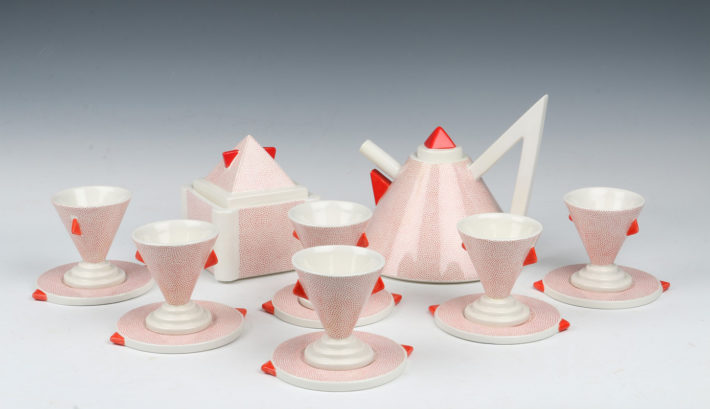
Nefertiti, design by Matteo Thun, Memphis, 1981.
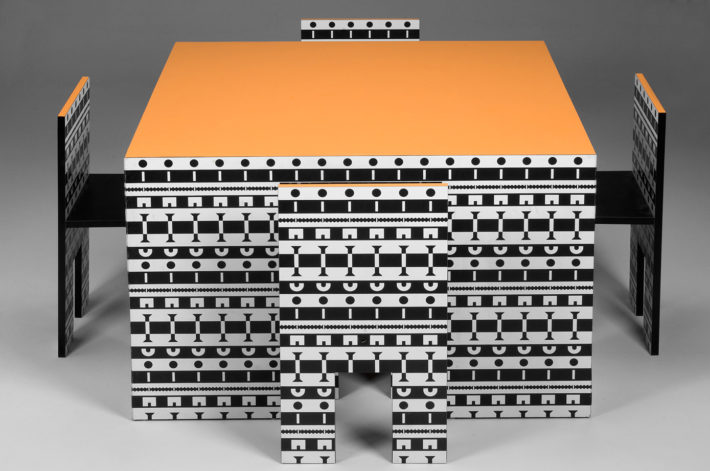
Olimpico, design by Alessandro Mendini, Studio Alchimia, 1980.
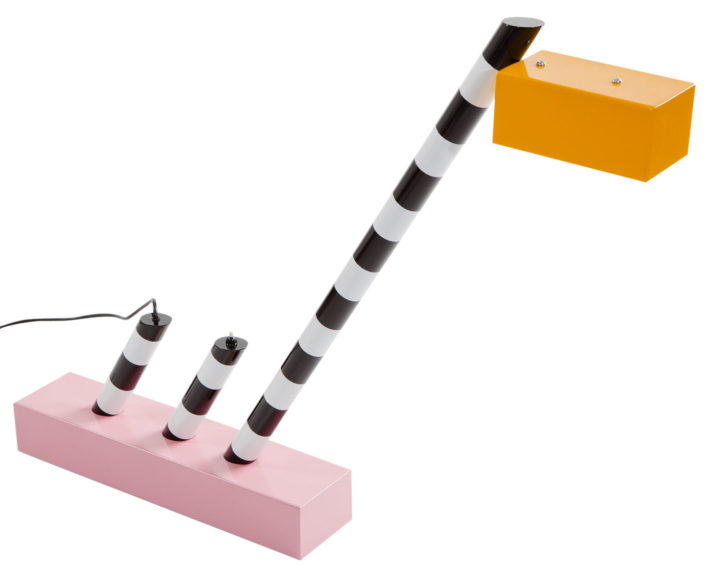
Oceanic, design by Michele De Lucchi, Memphis, 1981.
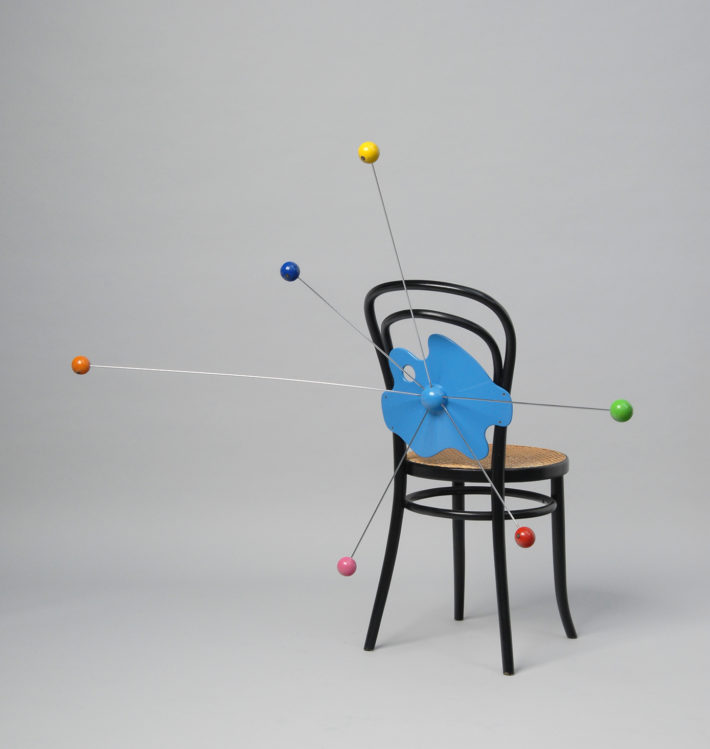
Redesign Thonet, design by Alessandro Mendini, Studio Alchimia, 1979.
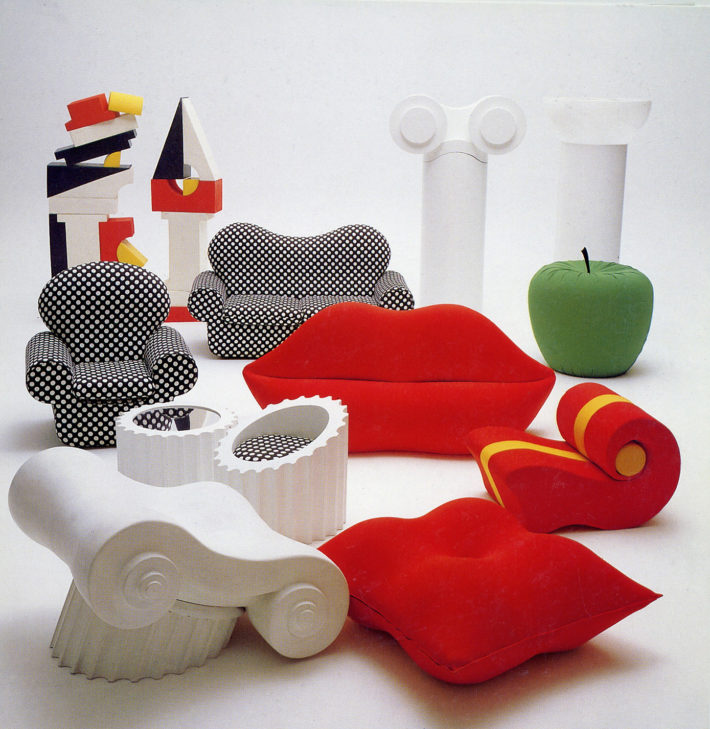
Gufram collection, display to mark the 50 anniversary of the company, founded in 1966.
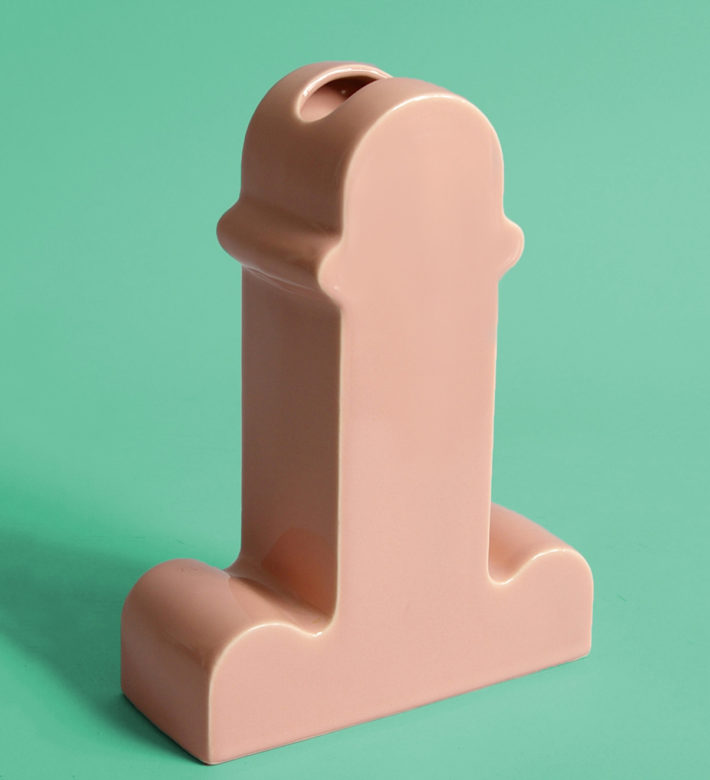
Shiva, design by Ettore Sottsass, 1973. Vase.

Nemo, design by Fabio Novembre for Driade, 2010.
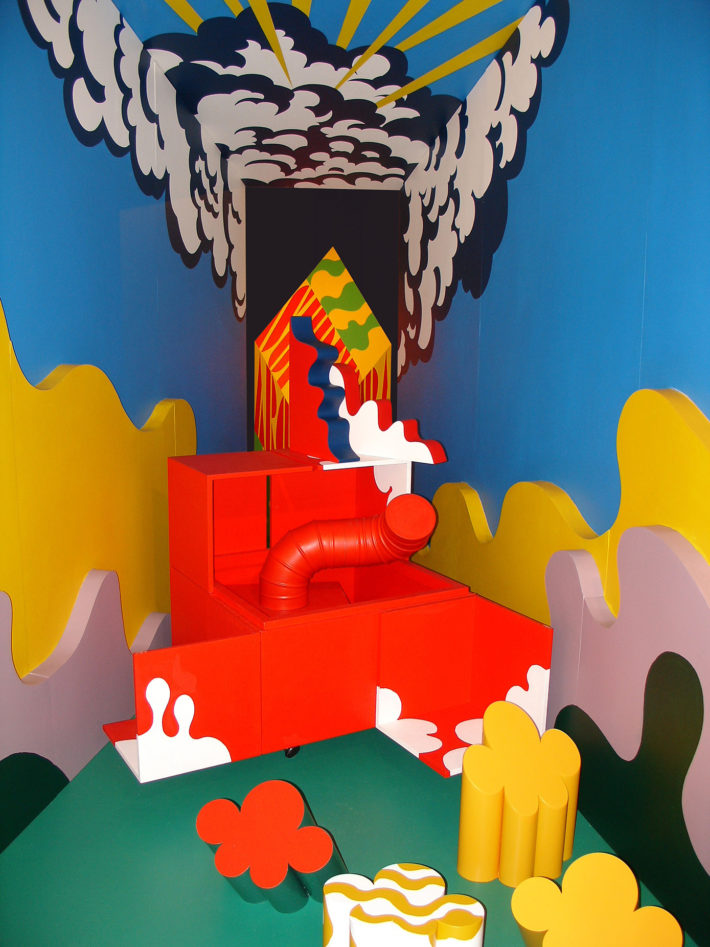
Archizoom (A. Branzi-G. Corretti-P. Deganello-M. Morozzi) and Superstudio (A. Natalini), Superarchitettura, 1966-67. In this photo a reconstruction at the Museo del Novecento in Florence.